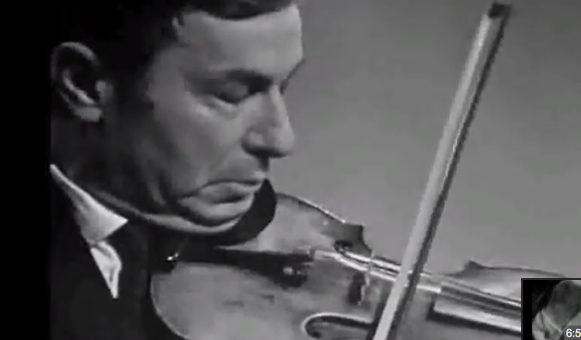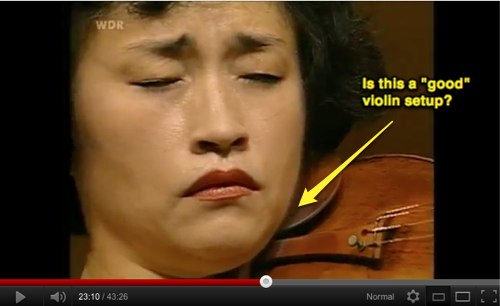It’s fine if you really need to use a shoulder rest for your violin or viola. But, are you really, really sure you need you need that shoulder rest? Or did you simply dismiss the idea of going without it, based on a five minute “I don’t like the way it feels?”
At a recent orchestra performance, I had the pleasant surprise of being stand partner with a wonderful professional violinist who just weeks before, ended a lifelong shoulder rest habit. By evaluating her violin setup in my studio, and fitting her with a custom chin rest, the shoulder rest became an unnecessary impedance. She was ecstatic, to say the least.
To make the switch, you’ll need to rethink your approach to supporting the violin. No longer is it rigidly fixed into a single position. Instead, it is dynamically supported at three points.
Your violin and head should easily move as you play. The amount of effort used to support the instrument should be situational: add only a minimum support only as needed. This Nathan Milstein video exemplifies the kind of setup that will support a stellar career into your 80s. Notice how Mr. Milstein’s head and violin are free to move at will. Notice the great efficiency in his playing.
Here’s your transformation: release the tension in your violin as a starting point. Where else in your life are you locked into rigid, inflexible positions? Where can you produce greater results with far less effort.

